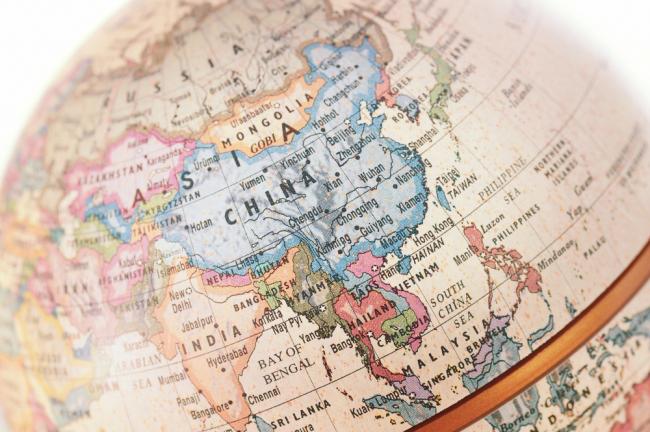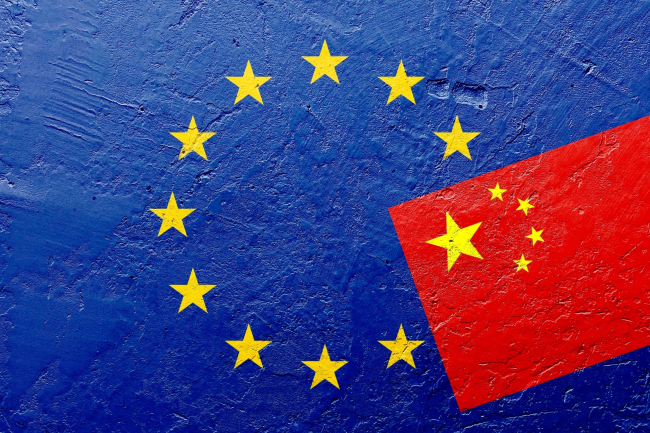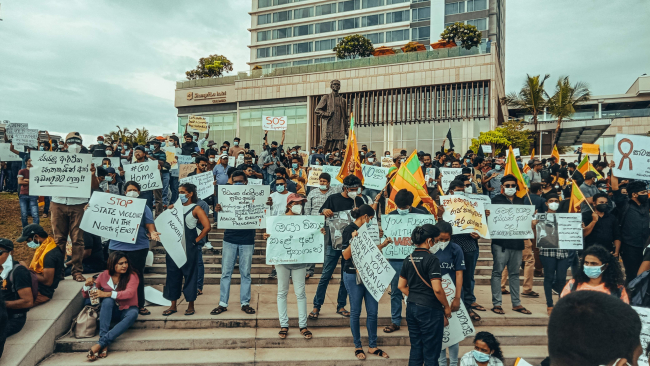A Democratic tour de force: How the Korean State Successfully Limited the Spread of COVID-19
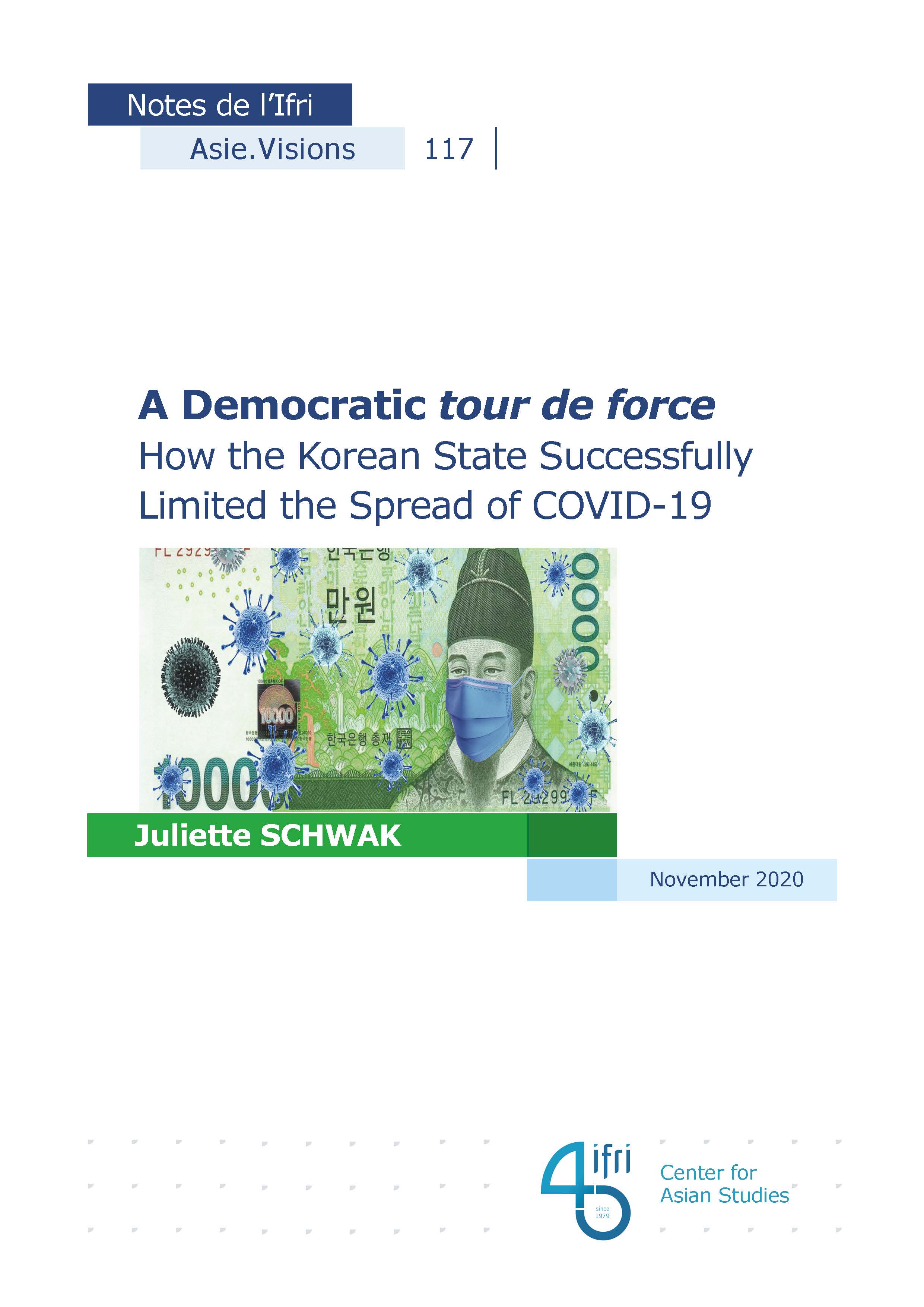
While the COVID-19 pandemic is still greatly affecting most of the world, the Republic of Korea has managed to stall the spread of the disease.
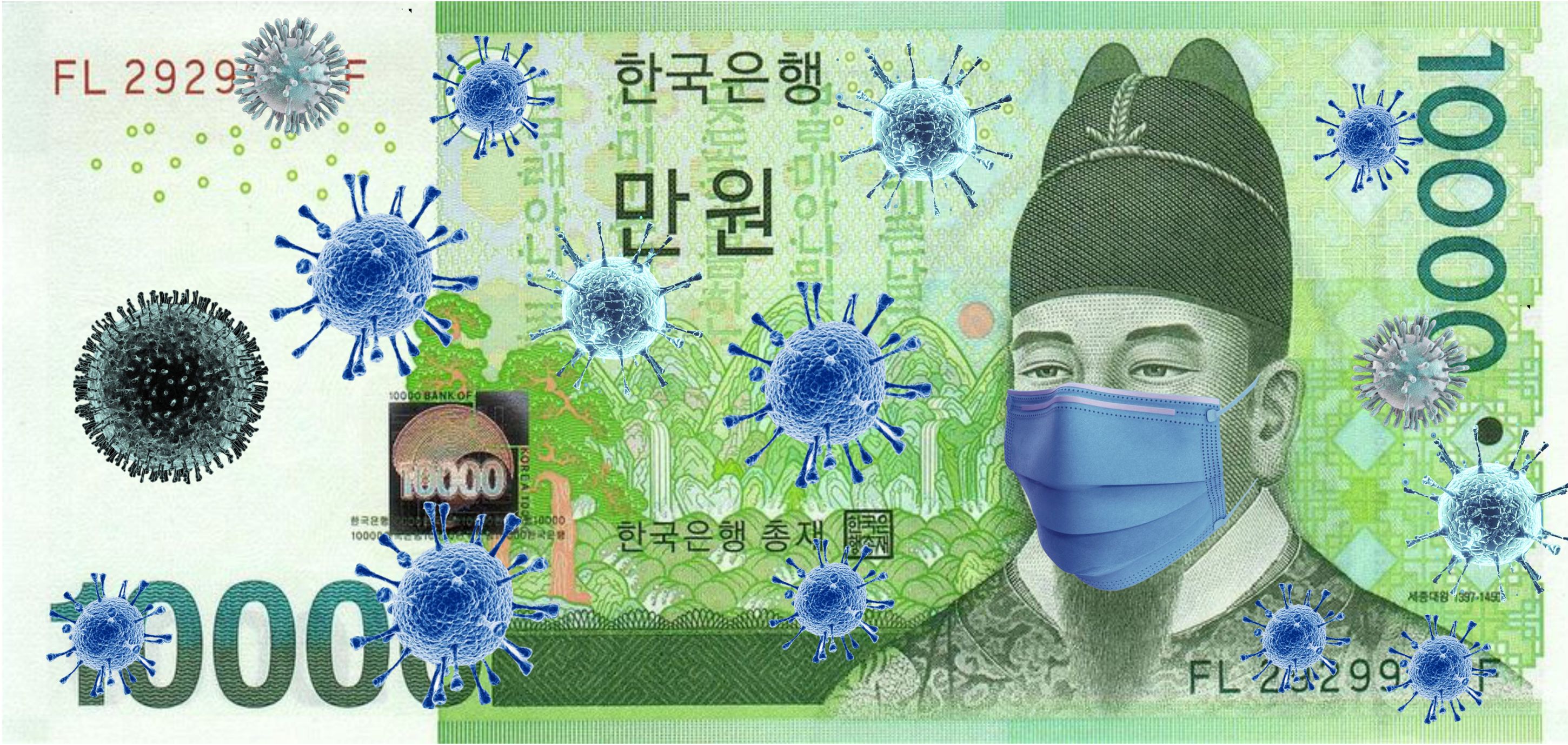
No nationwide or even local lockdown was imposed; citizens largely complied with government guidance on social distancing and there have been no COVID-related protests in the country. The response of the Korean government and of Korean society to the COVID-19 crisis has generated much interest among foreign observers, who wonder how the Korean government was able to limit the spread of the disease while maintaining economic activity and without generating distrust among the population.
The paper argues that a multiplicity of factors have enabled the Korean government to limit the spread of the disease without antagonizing the population but most importantly that it was Korea’s democratic control of technology that was effective in curbing the contagion curve, rather than technology per se. The Korean government has used information technologies and surveillance mechanisms to track COVID-19 cases through applications and tracing maps. But a transparent and legally limited use of surveillance technologies has proven decisive in the management of the pandemic.
However, several challenges still await Korea after COVID-19, even while it now exports its COVID response as a ‘K model’. These include the current second wave and imported cases, as well as domestic debates surrounding the government’s Keynesian response to the economic repercussions of the pandemic.
Download the full analysis
This page contains only a summary of our work. If you would like to have access to all the information from our research on the subject, you can download the full version in PDF format.
A Democratic tour de force: How the Korean State Successfully Limited the Spread of COVID-19
Related centers and programs
Discover our other research centers and programsFind out more
Discover all our analyses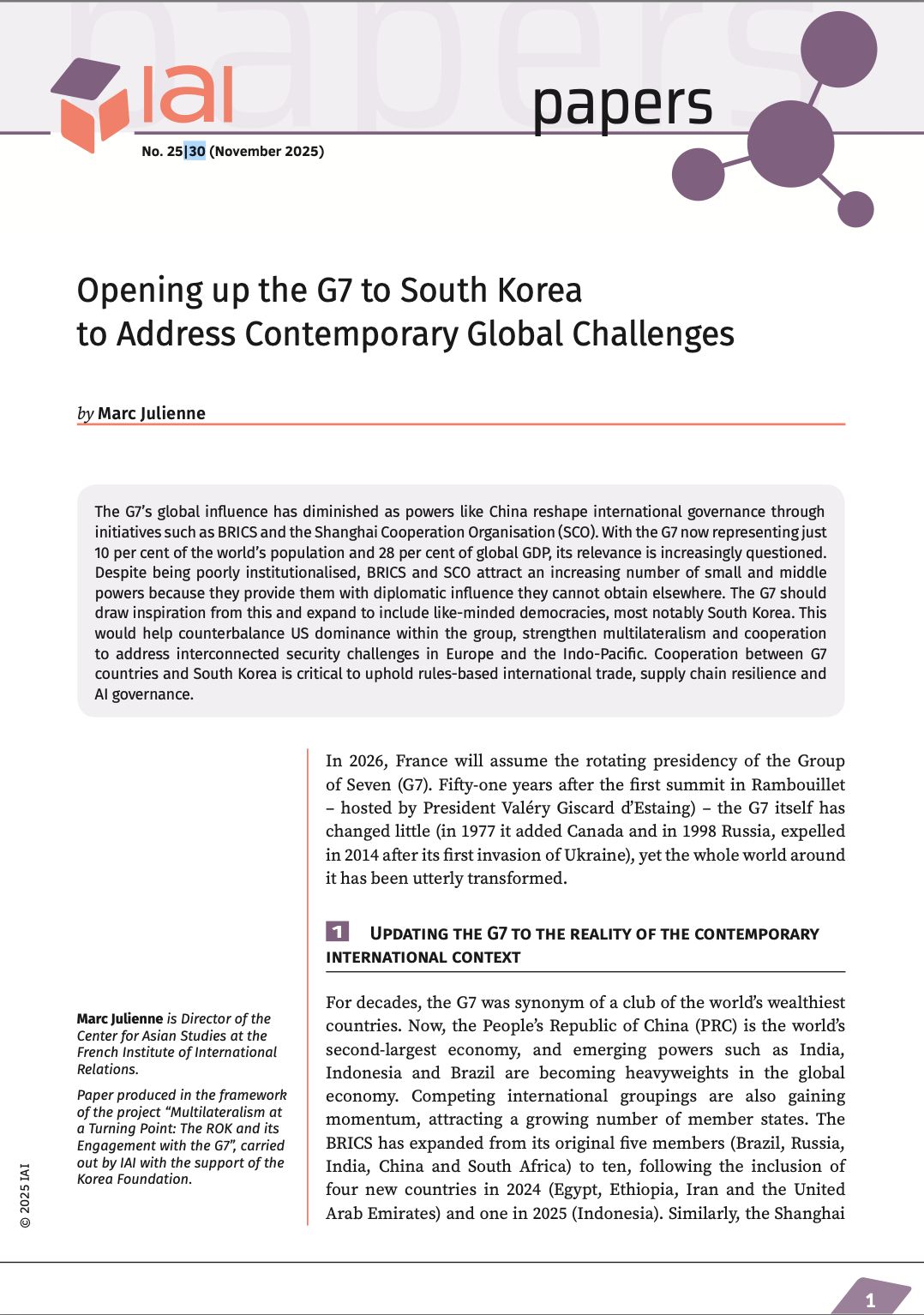
Opening up the G7 to South Korea to Address Contemporary Global Challenges
The G7’s global influence has diminished as powers like China reshape international governance through initiatives such as BRICS and the Shanghai Cooperation Organisation (SCO). With the G7 now representing just 10 per cent of the world’s population and 28 per cent of global GDP, its relevance is increasingly questioned.
Expanding SPDMM as a pivotal institution in the Pacific – A French perspective
The South Pacific Defence Ministers’ Meeting (SPDMM) is the only forum that brings together defense ministers from the wider South Pacific — including Chile, which is hosting it for the first time. This heterogeneous group of countries with varying resources, capacities, and interests — Australia, Chile, Fiji, France, New Zealand, Papua New Guinea (PNG), and Tonga — are united by their shared determination to strengthen cooperation on maritime security and humanitarian assistance and disaster relief (HADR) activities.
EU’s Derisking From China: A Daunting Task
With economic security as a major concern, the EU has recently turned to “derisking” from China. The EU strategy entails reducing critical dependencies and vulnerabilities, including in EU supply chains, and diversifying where necessary, while recognizing the importance and need to maintain open channels of communication.
Sri Lanka’s NPP Government. From System Change to Structural Compliance
In September 2024, a relative outsider to Sri Lanka’s two-party-dominated political system, Anura Kumara Dissanayake, won the presidential elections. The anti-establishment, populist movement he represented, the National People’s Power (NPP), went on to receive an overwhelming mandate in the November 2024 general elections, winning 159 seats in a 225-member parliament.






